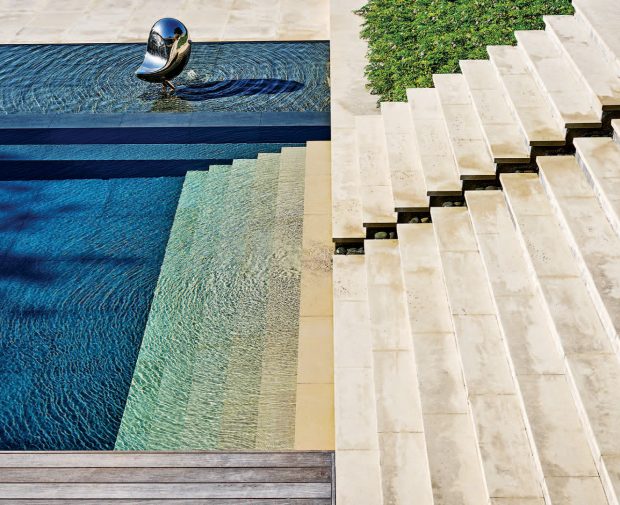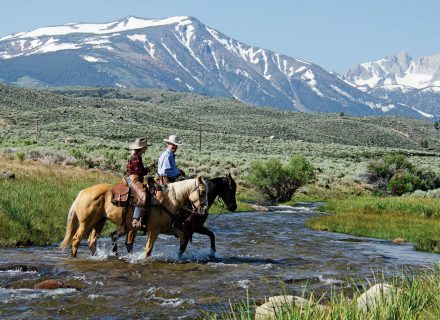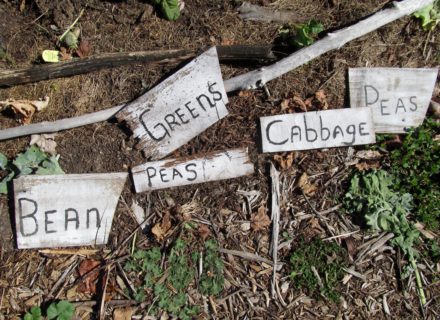Two legendary landscapes designers, Margie Grace and David Hocker, talk tips on saving, splurging, and sprucing up your outdoor oasis.
Landscape designer Margie Grace—principal of California’s Grace Design Associates and author of Private Gardens of Santa Barbara—shares words of wisdom from her three-plus decades in the business.
What’s one way you can reduce the maintenance requirements for your landscape? “Pick the right plant for the right place. For example, if you want a hedge to be 6 to 8 feet high, pick a plant that grows that high and leave it alone, rather than a plant that wants to grow 30 feet high and shear it constantly.”
What about water conservation? “Water conservation starts with plant selection. In Santa Barbara, I pick plants that will give me the aesthetic I want that are low water demand and, preferably, high habitat value. I further reduce water requirements by including a lot of nonliving material in the landscape composition: gravel, pebbles, stone, little sitting areas tucked in here and there.” 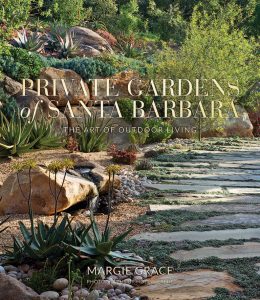
Where can you save on landscape design, and where should you splurge? “Don’t compromise on the design. Make your budget adjustments in your materials choices and how you execute the design. Just as indoors, for instance, ‘flooring’ materials outdoors might be any number of things, each with a specific price point. Typically, I’ll use stone or architectural concrete or brick in the primary areas (a patio and landings next to the house, for instance), gravel for secondary areas (a sitting area under a tree, garden paths), and mulch for tertiary areas (paths within planting areas, say). This puts the money where it makes a difference while keeping the budget in check.”
You tout the use of “hardworking plants.” What do you mean by that? “Say you want a plant to provide screening. You could just put in a hedge, or you could use, say, a citrus tree that’ll give you year-round screening (it’s evergreen), and you’ll have fruit to eat, the lovely scent of blossoms to enjoy, and be doing your bit to support pollinators. Depending on your screening needs, pick the right citrus tree, trim it right, and you can add shade into the bargain as well.”
What are some simple things you can do to spruce up an existing outdoor space? “Declutter. Make room to breathe; surround yourself only with things you love. Then refresh—a few throw pillows and a lap blanket to cozy up a dreary or unused corner, a fresh coat of paint in a fun color on furniture you already own or on a wall adjacent to where you like to sit. And scavenge. Try making your own furniture out of building material pallets or a fountain out of a stock tank.”
Celebrating 15 years of his eponymous Dallas-based firm, landscape architect David Hocker releases the first monograph of his work.
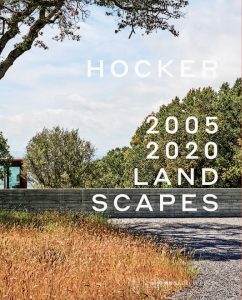 What is something you often have to educate clients about? “One thing people forget is you need to be patient. The second we’re finished with our project, it’s just beginning. Money can buy a bigger tree, but it still means all this has to grow and fill in. It also means there are anomalies that happen. It’s a living element that you’re dealing with.”
What is something you often have to educate clients about? “One thing people forget is you need to be patient. The second we’re finished with our project, it’s just beginning. Money can buy a bigger tree, but it still means all this has to grow and fill in. It also means there are anomalies that happen. It’s a living element that you’re dealing with.”
What can you do to pack a punch in a small outdoor space? “I think for those to be really impactful, it’s just how that indoor-outdoor connection happens right at the threshold so you’re stepping out into a very special space. Particularly with infill projects, screening is important. Dealing with common boundaries and privacy issues is important to making it feel like it’s a very nice outdoor room because the last thing you want to do is walk outside and be staring up at your neighbor. A lot of times you can only go a certain height with walls, just based on code, and then it’s more about OK, well, what can we plant that’s appropriate that will get really tall and create some screens?”
You use a lot of native plants in your projects. Why is that important? “I’ll broaden that to an adaptive plant palette because depending on the site or even the area that you’re working within, you can pull plants that are wholly adapted for the region as well. That ultimately equates to what people want to hear: lower-maintenance, maybe less water-consumptive plant materials. You’re just looking for very hardy, appropriate plant material that’s going to thrive in the particular setting.”
How do you respond when you get a request for a low-maintenance landscape? “It’s really a matter of setting expectations. To me, a low-maintenance garden might not have any lawn in it, so you’re not maintaining the turf areas, which are more consumptive of water. It has a little bit different carbon footprint than, say, a meadow that once established, you either burn or cut back once a year. But funny enough, some people would see a lawn as very low-maintenance because they’re like, well, I just mow it and that’s it, whereas I’m like, well, but you’re mowing it weekly instead of this meadow that once it’s established, you’re just cutting back once a year. Generally, within the profession, lower-maintenance would allude to a garden that’s much more natural. It’s less hedging or pruning, less mowing, less water, less fertilizer. That doesn’t always mean that’s what people think of. I will say in either scenario, this idea of a garden being something that you just install and then forget about is not really correct. It’s a very big investment on these projects, and if it’s something that you value, like maybe you value the trees on your property, that means you also need to take care of those trees, the same way with other elements that are planted.”
For more information on the design firms, visit gracedesignassociates.com and hockerdesign.com.
Photography: (Cover image) courtesy Holly Lepere, (David Hocker images) courtesy Millicent Harvey Photography
From our April 2021 issue







